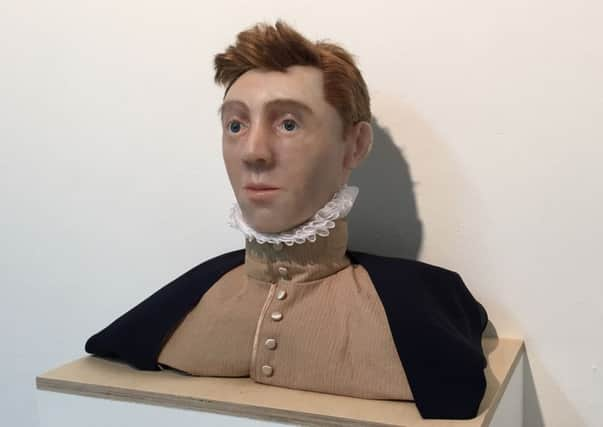Student solves 250-year-old mystery of '˜Lord Darnley' skull


Dundee University’s Emma Price has recreated the face of Lord Darnley, the second husband of Mary, Queen of Scots, following forensic detective work for a Masters show.
She has also managed to rule out one of two skulls which were said to be Lord Darnley’s - almost 450 years after his still-unsolved murder in Edinburgh.
Advertisement
Hide AdAdvertisement
Hide AdThe marriage of Mary to a young nobleman, Lord Darnley, was a disaster, with his immature behaviour and late-night carousing making him a political liability.
He was killed on 9 February 1567 when the lodgings he was staying in were destroyed by a massive explosion and buried in the royal vault of the abbey church at the Palace of Holyroodhouse.
Mary would go on to marry the Earl of Bothwell - the man generally believed to be the murderer of Lord Darnley.
Advertisement
Hide AdAdvertisement
Hide AdHowever the vault was raised between 1776 and 1778 and two skulls purporting to be Lord Darnley’s have been held in Edinburgh University’s archives and at the Royal College of Surgeons in London.
Dundee University’s world-renowned Centre for Anatomy and Human Identification was called in by Edinburgh University to try to resolve the long-standing riddle over the skulls.
Ms Price, who was studying a Masters in forensic art and facial identification, used craniofacial superimposition on the two skulls and compared them to portraits of Lord Darnley - finding that the RCS skull fitted “remarkably well.”
She used 3D software to produce a model of the skull and used wax and silicone to create a reconstruction of his head, complete with bright blue eyes and light brown hair.
Advertisement
Hide AdAdvertisement
Hide AdShe said: “Edinburgh had a skull in their collection inscribed ‘The skull of Lord Darnley, found in Kirk o’ Field’ and for years that was believed to be the case but there was another one said to be his at the Royal College of Surgeons.
“Then, in 1928, a mathematician and scientist called Dr Karl Pearson analysed the RCS skull and pronounced it to be Darnley’s. He was an early pioneer of craniofacial superimposition and he used a technique that had only just been invented but the science has obviously moved on massively since then.
“In order to clear up the mystery, Edinburgh asked me to look at both skulls and find which was the most likely match. This wasn’t easy as the RCS skull had been destroyed in the Blitz so we had to rebuild it using images and Dr Pearson’s very precise measurements.
Advertisement
Hide AdAdvertisement
Hide Ad“Craniofacial superimposition is a method of analysis in which an unidentified skull is compared to images of a missing person, or in the case of Lord Darnley, contemporary portraits. Upon completion, one of the skulls was identified as fitting remarkably well.
“The features on the portrait such as the very arched eyebrows and distinct sloping forehead led me to conclude that the Edinburgh skull didn’t stand up to scrutiny whereas the RCS one was a good match.
“From the analysis I did we can say the Edinburgh skull is definitely not Darnley’s while I produced a craniofacial reconstruction of the other skull presenting a 3D sculpture of what Lord Darnley would have looked like before his untimely death.
“Darnley was said to be very handsome. He was over six foot tall, which would have been highly unusual for the 16th century.
Advertisement
Hide AdAdvertisement
Hide Ad“I knew the Mary story before I embarked on this project but had to learn all I could about Darnley. What’s interesting is that in a time when Protestant and Catholic figures were depicted as either heroes or villains depending on who the writer was, Darnley was universally hated. People reviled him for his arrogance, drunkenness and promiscuity.”